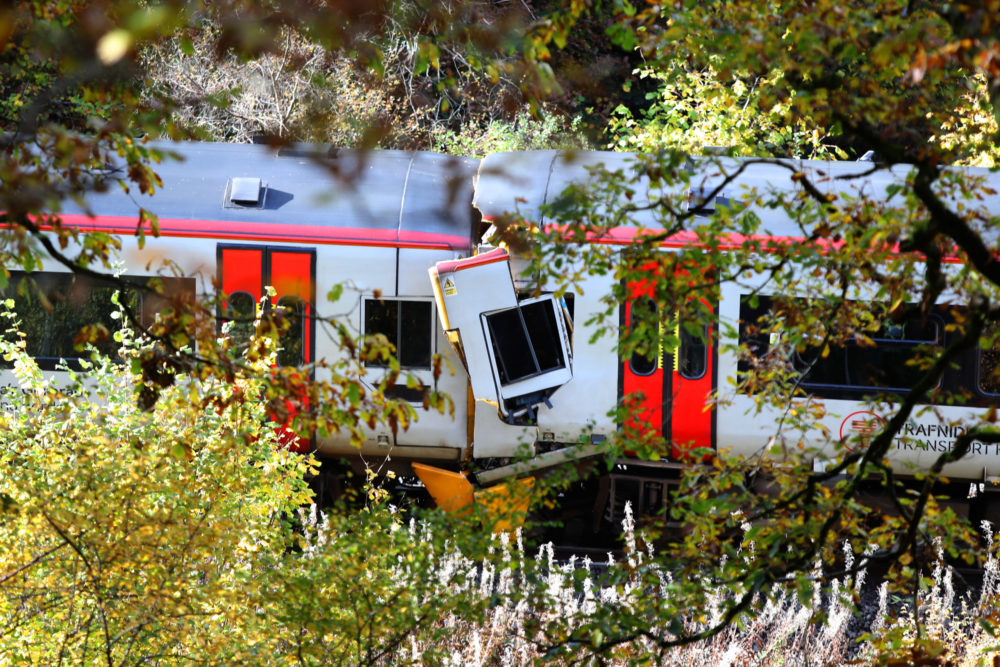Transport for Wales runs services at lower speeds over ‘slippery rails’

Transport for Wales (TfW) is running services at reduced speed on Wednesday following a fatal crash suspected to have been caused by slippery rails.
Two TfW trains collided head-on near Talerddig in Powys at 7.26pm on Monday night, resulting in the death of a male passenger in his 60s from a suspected heart attack.
Four other people suffered serious injuries, and a further 11 sustained injuries requiring hospital treatment.
The Rail Accident Investigation Branch (RAIB) said the condition of the track on the approach to the collision point meant “adhesion” between wheels and rails was “relatively low”.
It said this suggested an Aberystwyth-bound train may have slid while braking, causing it to crash at a speed of around 15mph into a stationary train destined for Shrewsbury.
“Slippery rails”
A signaller instructed the oncoming train to perform an “immediate stop”, but a collision could not be avoided.
A conductor on the train that slid sustained a “bang to the head” and “possible broken arm”, while the driver of the other train suffered “bleeding” and was initially trapped in their cab because it was damaged.
The RAIB said it will publish a further update on its investigation “in the coming days” once it has gathered and analysed more evidence.
Major disruption
The RAIB has not issued an urgent safety announcement, which it does when it believes rapid action is needed following an incident.
Support our Nation today
For the price of a cup of coffee a month you can help us create an independent, not-for-profit, national news service for the people of Wales, by the people of Wales.





This news story calls to my mind my distant university student days, way back in the 1960s when I used the then ‘Cambrian Coast Express’ to get myself from Shrewsbury to Lampeter, via Aberystwyth as a point of transition on the way. . In the late ’60s the Cambrian Coast Express was still steam-hauled, even when steam trains had pretty much ceased to exist across the BR network; and a fellow-student friend of mine who was a train buff explained to me that the reason was that the steep gradients on parts of the Shrewsbury-Machynlleth-Aberystwyth line meant that heavy diesel… Read more »
https://www.newcivilengineer.com/latest/orr-accepts-network-rail-plan-to-improve-performance-in-failing-wales-western-region-27-09-2024/
Has Network Rail reduced its management of lineside vegetation in recent years?
And was this a human intervention:
“A signaller instructed the oncoming train to perform an ‘immediate stop'”
Surely the state of the art signalling with its recent upgrade that Network Rail is trialling in Wales should be capable of this. What would’ve happened had the signaller not intervened? And why doesn’t the new system enforce greater separation to give more time to respond in situations like this.
The two trains were traveling in opposite direction’s what on earth were they doing on a single track head on one or the other should have been on a siding waiting for the other to pass before proceeding this is a signaling error. Leaves my foot.